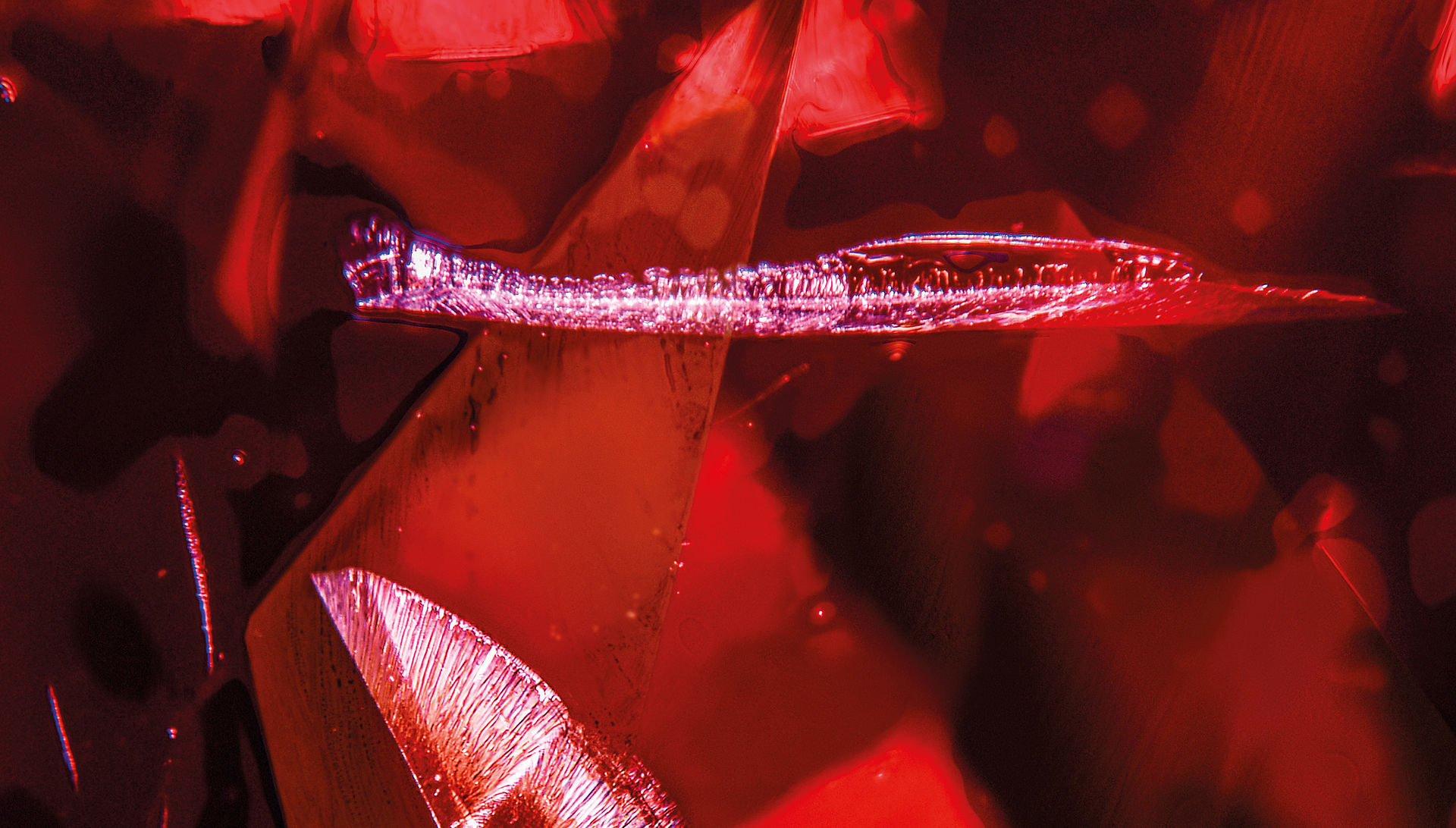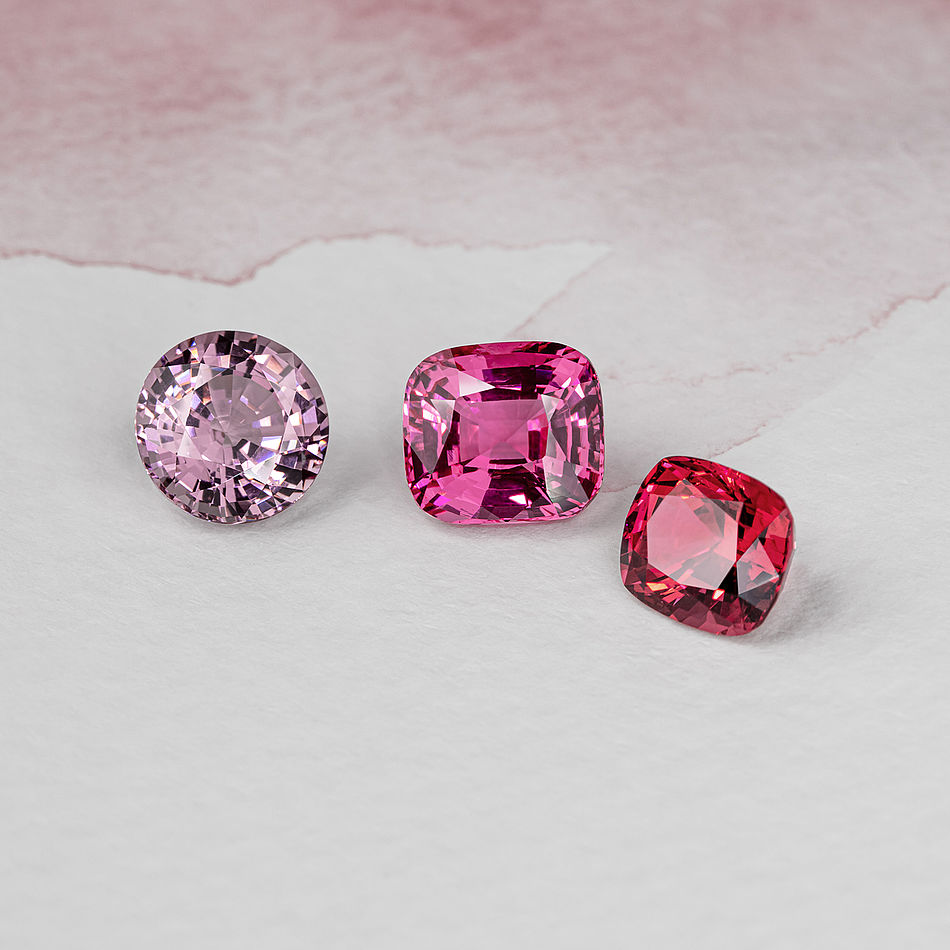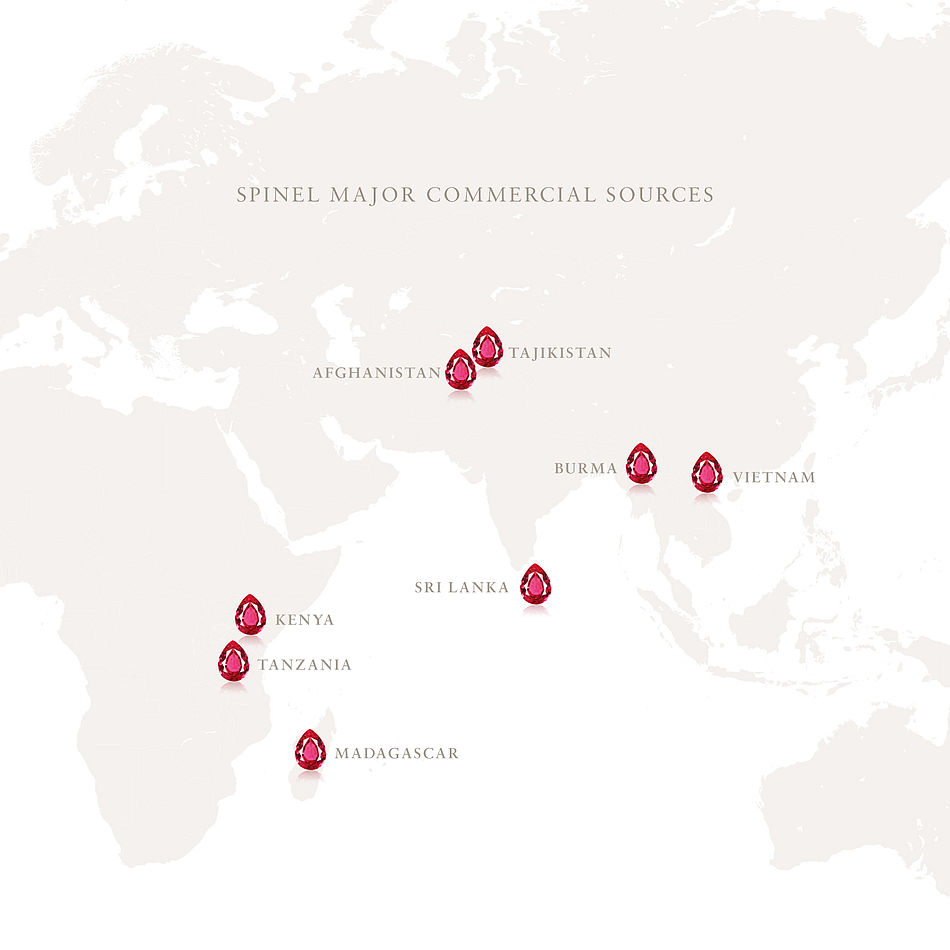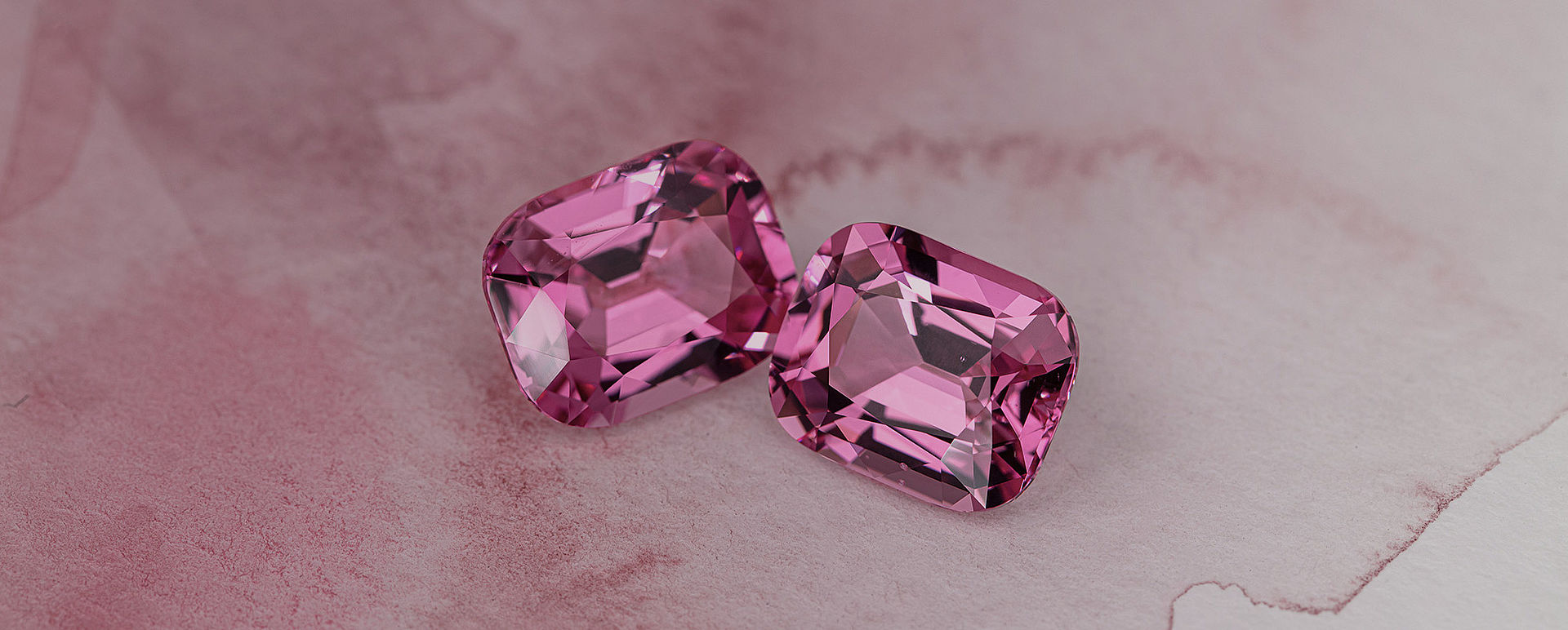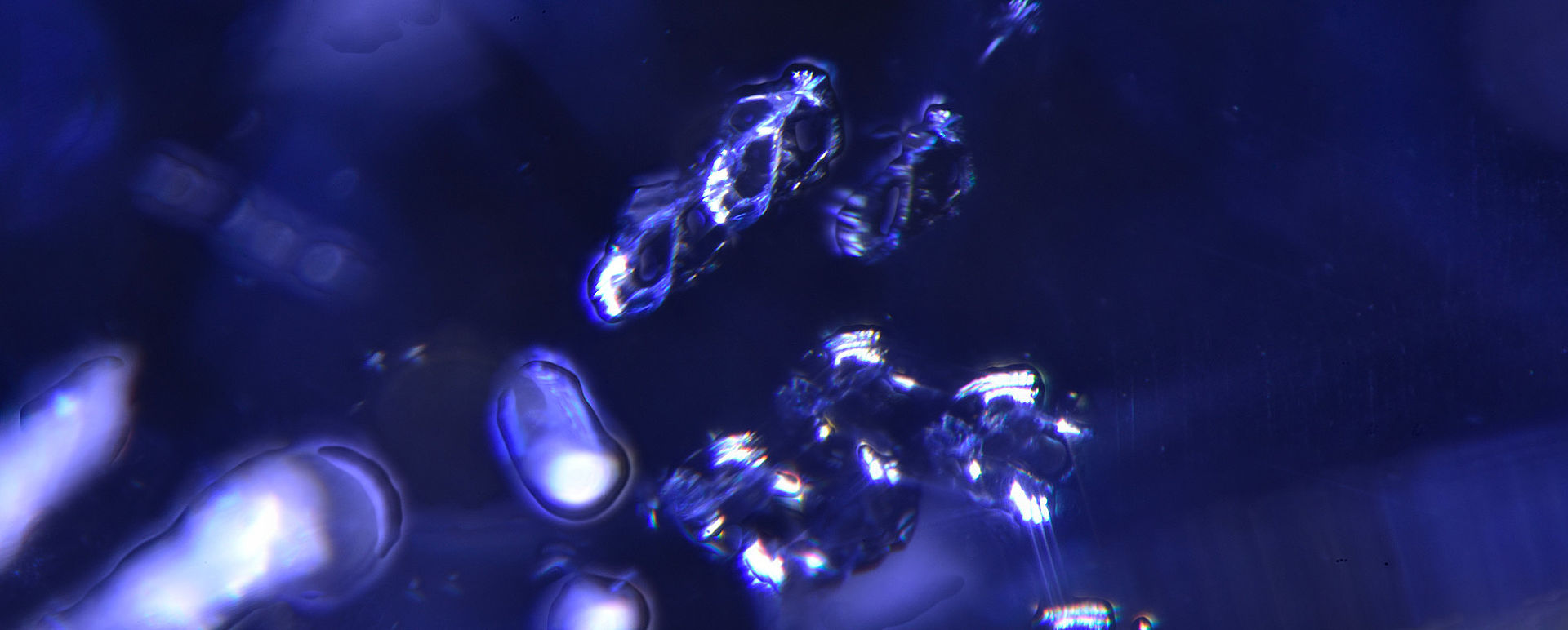Discover the
spinel
Spinels captivate us with their natural splendour of colours, their fire and their brilliance. By nature, they shine in the most beautiful and brightest colours of the rainbow. Intense shades of red are particularly prised and can look very similar to rubies.
Spinels used to be among the lesser-known gemstones, but in recent years their popularity has surged significantly, leading to a noticeable rise in demand for these exquisite gemstones.
Spectacular
Colours
Colour – colour – colour. This characterises spinels best – whether in intensely straight red, electric blue or vibrant pink – these gemstones sparkle in all the colours of the rainbow. Trace elements give spinels their colour.
Chromium, for example, produces red or pink spinels, with the colouring increasing as the chromium content increases. Iron, on the other hand, is responsible for blue and violet colours. Spinels whose blue colour is produced by cobalt are particularly prised. This is specifically identified as cobalt spinel in the reports of the gemmological laboratory.
Spinels that change colour depending on the light source are very rare; under daylight they display a beautiful blue colour while under artificial incandescent light the same gem shines a warmer purplish-violet.
Fascinating
History
Spinels have been known since ancient times. However, it was not until 1783 that the French mineralogist Jean-Baptiste Louis Romé de l’Isle discovered that they form a group of minerals in their own right.
As a result, some of the largest rubies in history are actually spinels. Among the best-known examples are the “Black Prince’s Ruby”, which is set in the Imperial State Crown, and the “Timur Ruby”. These two spinels, which were long considered rubies, are part of the British Crown Jewels.
Today, it is quite easy for gemmological laboratories to distinguish between rubies and spinels.
Symmetric
composition
Spinels belong to the cubic crystal system and grow as octahedrons. Due to the symmetrical structure, it is said in Burma (Myanmar) that the crystals are polished by the spirits (‘nat thwe’) – as they grow so perfectly in the host rock.
In chemical terms, spinel is known as MgAl2O4. On the Mohs scale of hardness, spinel scores 8. Spinel’s relative high refractive index (RI) gives them a stunning brilliance and fire.
Important
origins
Today, spinels are mainly found in Myanmar (Burma), Sri Lanka, Vietnam, Tanzania and Tajikistan. In 2007, red and pink spinels were discovered in the Mahenge region of Tanzania, which are world-famous for their colour.
Particularly fine blue spinels often come from Vietnam. Afghanistan is also one of the historical places where they were found. The former name “Balas ruby” was derived from the old name “Balascia” of the Badakshan region on the border of Afghanistan, Tajikistan and northern India.


